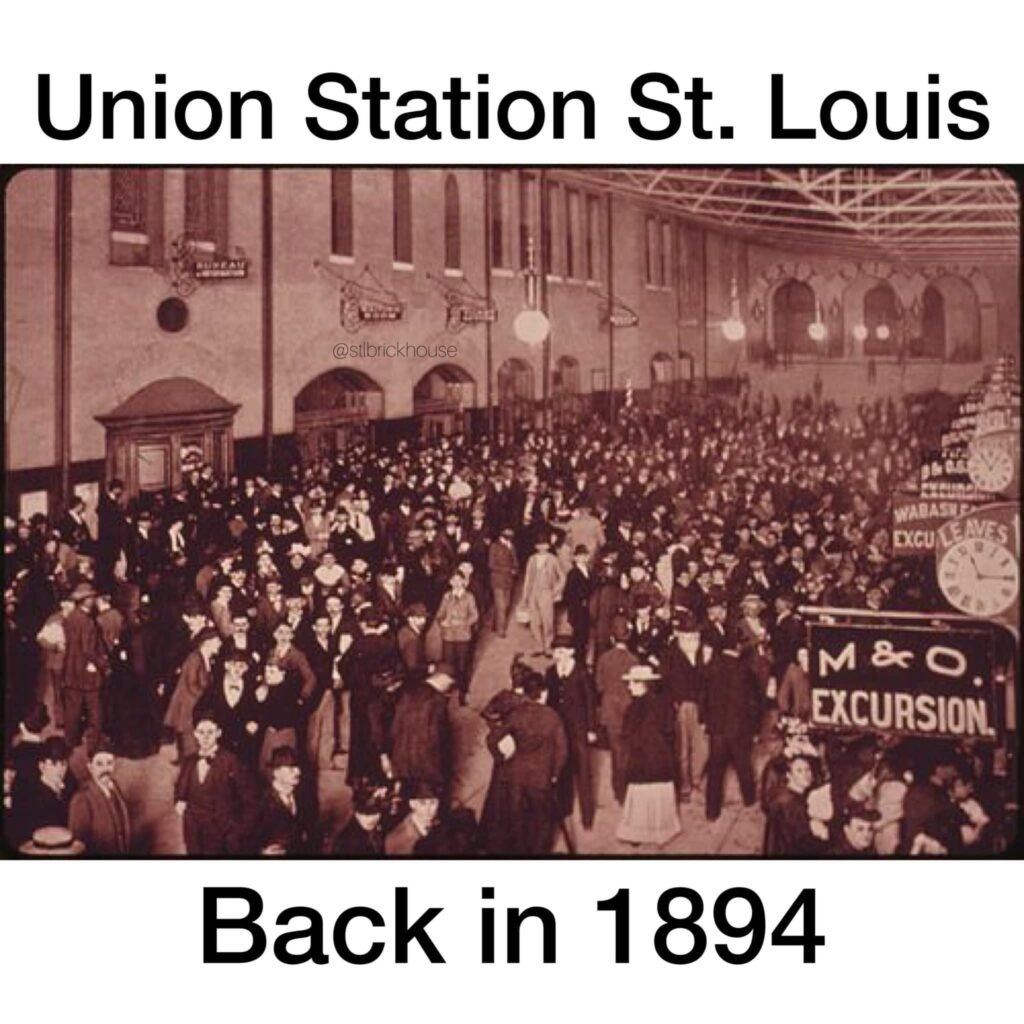Saint Louis Union Station, once a bustling hub of American rail travel, has a rich history that dates back to the late 19th century. The year 1894 stands out as a particularly notable period in the station’s timeline, marking an era of significant growth and activity. This article delves into the grandeur and significance of Saint Louis Union Station during this pivotal year.

The Architectural Marvel of 1894
Built in the Romanesque Revival style, Saint Louis Union Station was not just a transportation hub but also an architectural wonder of its time. In 1894, the station’s grandeur was evident in its intricate designs, expansive archways, and the remarkable grand hall. The station’s design was a symbol of the city’s ambition and growth, reflecting the optimism of the era.
A Hub of Activity and Connection
In 1894, Saint Louis Union Station was one of the world’s largest and busiest train stations. It served as a vital connection point for numerous railroads, making it a significant hub for both passenger and freight trains. The station buzzed with activity, with travelers from all walks of life passing through its halls, creating a melting pot of cultures and stories.
The Role in the City’s Economy
The station played a crucial role in the economic development of Saint Louis. It facilitated trade and movement, contributing significantly to the city’s growth as a commercial center. The influx of passengers also boosted local businesses, hotels, and the overall economy of the city.
Technological Advancements of the Time
The year 1894 was also significant in terms of technological advancements in rail travel. The station featured state-of-the-art facilities for its time, including advanced signaling systems and extensive track layouts. These innovations made travel more efficient and safer, further enhancing the station’s reputation as a modern transportation hub.
Social and Cultural Impact
Saint Louis Union Station was more than just a transit point; it was a social and cultural landmark. In 1894, it was a place where people from different backgrounds and regions met, exchanged ideas, and experienced the vibrancy of urban life. The station was a microcosm of the broader societal changes happening in America at the time.
In 1894, Saint Louis Union Station stood as a beacon of progress, architectural beauty, and bustling activity. It was a symbol of the city’s aspirations and a pivotal point in its history. Today, looking back at that crowded picture of the station from 1894, one can’t help but marvel at the rich history and the stories that this iconic landmark holds. As a testament to the era of rail travel, Saint Louis Union Station remains an important part of American history, cherished for its past and its enduring legacy.
What Made Saint Louis Union Station Unique in 1894?
Answer: In 1894, Saint Louis Union Station was unique due to its grand architectural design, its status as one of the largest and busiest train stations in the world, and its advanced technological features. The station’s Romanesque Revival style was not just aesthetically pleasing but also symbolized the city’s growth and prosperity.
How Did the Station Impact Travel and Commerce?
Answer: The station significantly impacted travel and commerce by serving as a major national hub for railroads. It facilitated efficient travel and transport of goods, contributing to Saint Louis’s development as a commercial and economic center. The station’s presence also spurred growth in local businesses and tourism.
What Were Some Technological Innovations at the Station in 1894?
Answer: Technological innovations at Saint Louis Union Station in 1894 included advanced signaling systems, extensive track layouts, and facilities designed to handle a large number of passengers and freight. These innovations made the station a model of modern efficiency and safety in rail travel.
Did the Station Play a Role in the Cultural Life of Saint Louis?
Answer: Absolutely. Saint Louis Union Station was a cultural landmark, not just a transportation hub. It was a place where people from diverse backgrounds converged, making it a melting pot of cultures and a center for social interaction. The station reflected the dynamic cultural life of Saint Louis in the late 19th century.
How Has the Station Evolved Since 1894?
Answer: Since 1894, Saint Louis Union Station has undergone significant changes. While it no longer serves as a major railway hub, it has been repurposed and revitalized, now housing a hotel, restaurants, and entertainment venues. The station’s evolution reflects the changing dynamics of transportation and urban development.
As an Amazon Associate we earn from qualifying purchases through some links in our articles.




